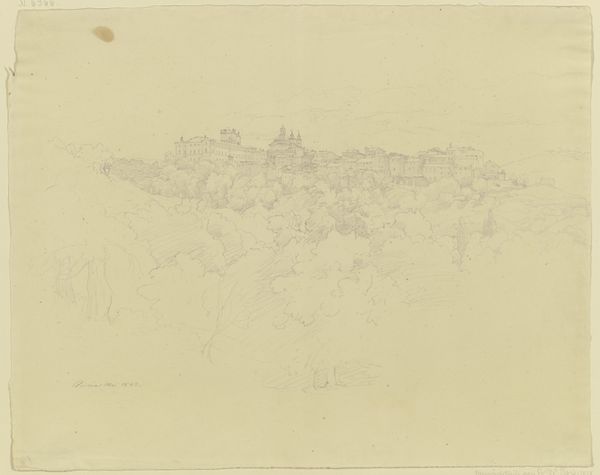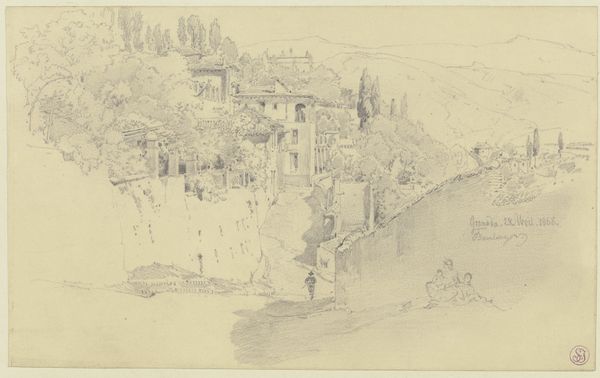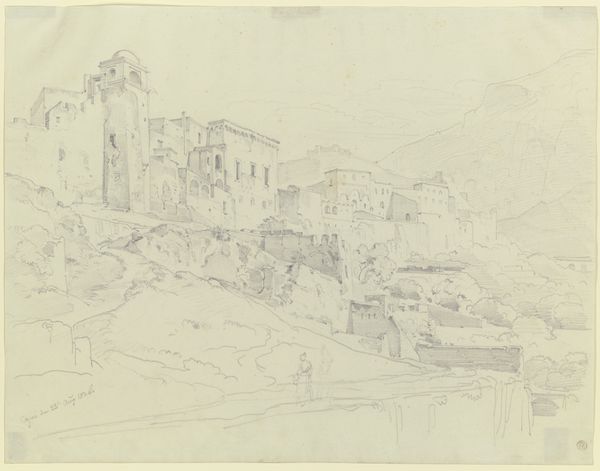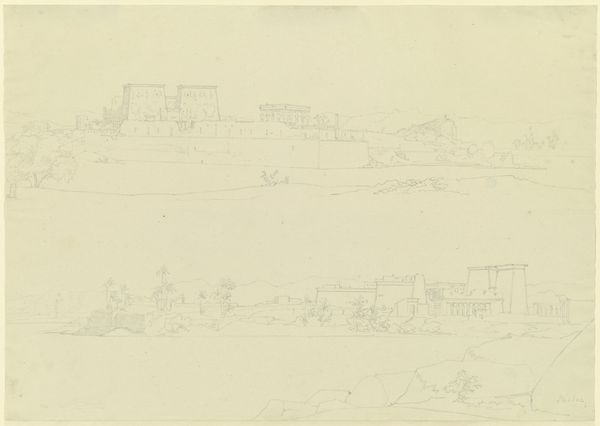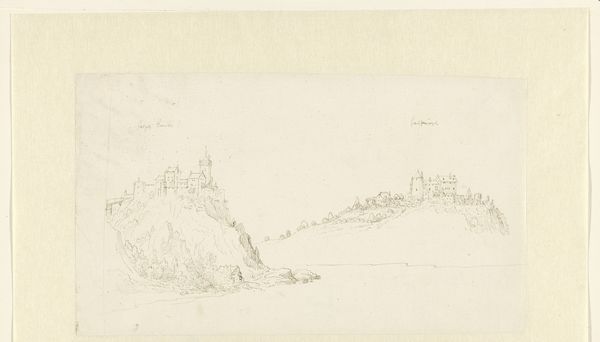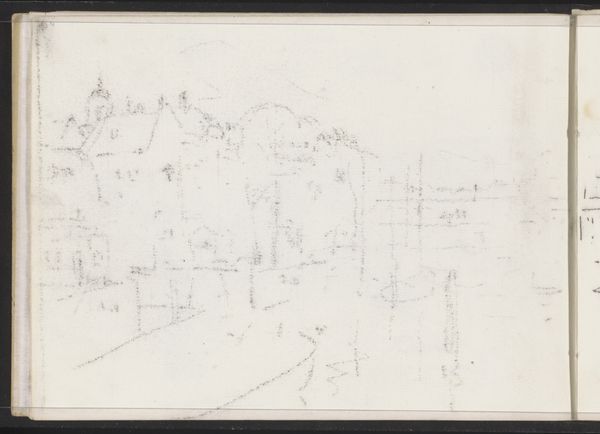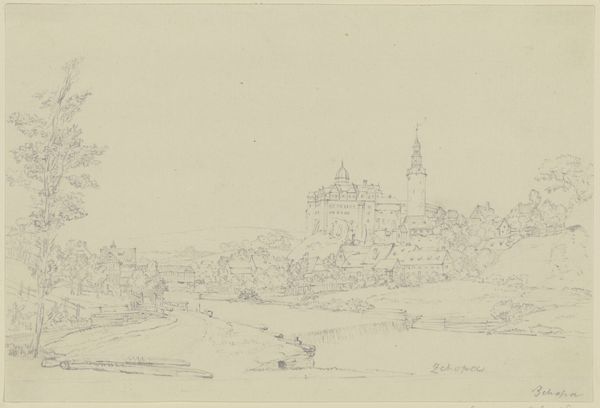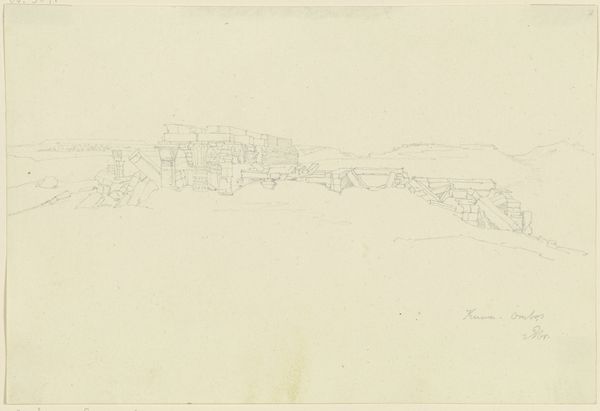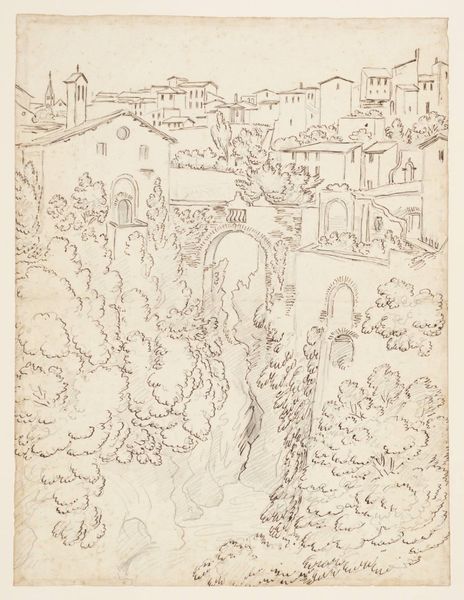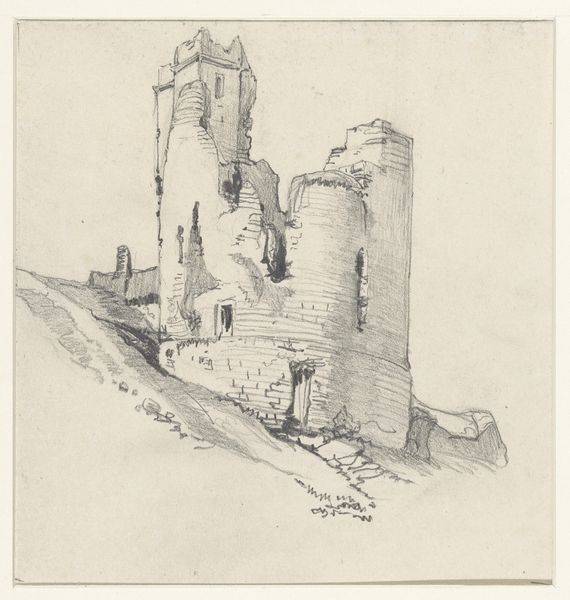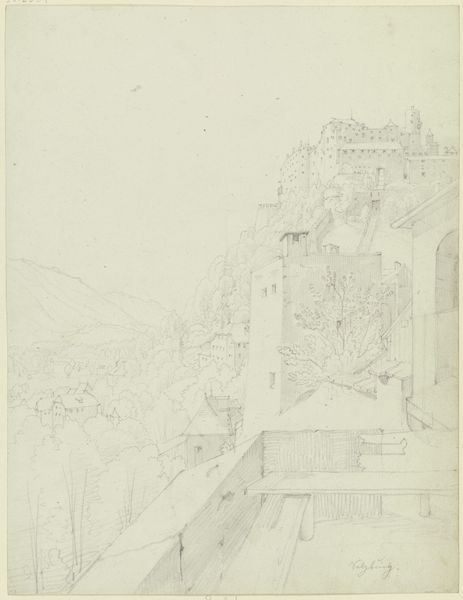
drawing, pencil
#
drawing
#
neoclacissism
#
16_19th-century
#
landscape
#
romanticism
#
pencil
#
cityscape
Copyright: Public Domain
Curator: Well, this is "Olevano" by August Lucas, made around 1830-1831. It’s a pencil drawing, and it’s currently housed here at the Städel Museum. Editor: There's such a lightness to it, isn't there? A sort of dreamlike quality, like seeing a memory float before your eyes. It feels delicate, ephemeral. Almost like it could disappear if you looked away for too long. Curator: That airy feel probably comes from Lucas's use of pencil—it’s quite characteristic of landscape drawings of that time, influenced by both Neoclassical ideals and early Romantic sentiments. Artists sought to capture both accurate representations and idealized versions of nature. Editor: The way he’s positioned two views of what appears to be the same city or landscape is interesting, but is there a perspective point that could create some spatial relationship between these two places? It feels spatially confusing, somehow freeing... Did many artists use pencil drawings for their landscape? Curator: Pencil sketches were incredibly common for artists making landscape drawings, acting like visual notebooks for larger paintings later on. They captured on-site observations before the age of photography, so you see so much focus on perspective and capturing light. Also, the subtle variations in shading give depth to the structures while also lending a very modern feel. I guess this piece has a touch of Romanticism. It highlights the majesty of nature and its impact on these small communities. Editor: Right, it evokes such a profound feeling. Even now, looking at the city, perched on the top of a mountain, it feels…imposing. As a record of that kind, maybe the sketch became a kind of poetic memory of the artist... Thanks for walking me through that. Curator: My pleasure. Always exciting to see how these 19th-century artists balance observational detail with emotional expression!
Comments
No comments
Be the first to comment and join the conversation on the ultimate creative platform.
